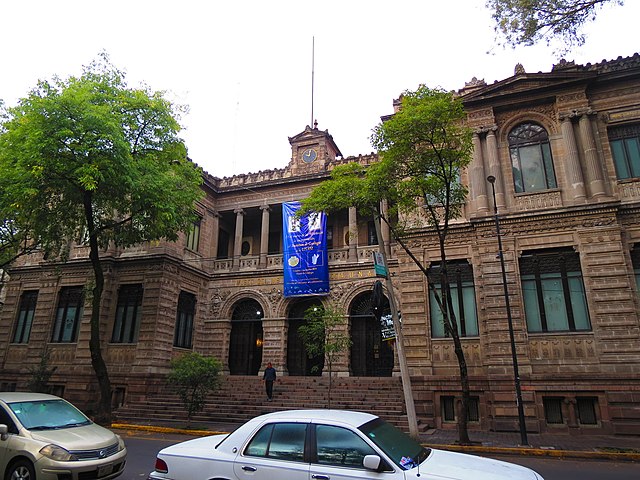
El Museo de Geología comenzó a funcionar en 1890 bajo la “Secretaría de Fomento, Colonización e Industria”, y ese mismo año Porfirio Díaz colocó la primera piedra del edificio de Bellas Artes.
A lo largo de sus 130 años de historia, el museo ha tenido varios nombres diferentes y similares, pero desde 1956 se le conoce como ahora. En 2003, en el marco del 450 aniversario de la UNAM, el museo expuso a Isauria, el primer dinosaurio encontrado y restaurado en México.
Hoy en día, vale la pena visitarlo por la ebanistería original y por el extraordinario edificio. Las colecciones incluyen las de las áreas de Paleontología, Minerales, Rocas y Meteoritos. Un esqueleto de mamut reconstruido es en realidad un compuesto de huesos de 12 animales diferentes.
Las pinturas de paisajes de José María Velasco, y tres vidrieras, dos de ellas con temas mineros, una máquina de extracción hidráulica y un sistema de bombeo, son una auténtica delicia.
La fachada del edificio del Museo de Geología es igual de detallada, con relieves que representan fósiles, reptiles y amonitas bajo los tres arcos de la entrada. En una tarde en la encantadora Santa María la Ribera, esto no hace más que aumentar el encanto. Se trata de un par de horas agradables y una visita obligada para los aficionados a la arquitectura, la historia y los museos.
A menudo recordamos la época del Porfiriato como una época que intentó asimilar todo lo que entonces representaba. Buscando una ruptura deliberada con el periodo colonial, el periodo de asimilación dio lugar a un eclecticismo en casi todo. La intención original del edificio era servir como instituto de investigación.
Con oficinas y laboratorios en la primera planta, y un museo científico con salas de exposición permanente en las plantas inferiores, tuvo un gran éxito. La fachada del edificio está tallada con piedra ignimbrita volcánica procedente de la cantera de Los Remedios, en el Estado de México.
 +52 (55) 5547 3948
+52 (55) 5547 3948
 http://www.geologia.unam.mx/igl/museo/index.html
http://www.geologia.unam.mx/igl/museo/index.html
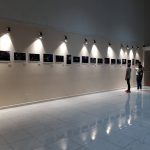
Cercano a 0.09 kms.

Cercano a 0.11 kms.

Cercano a 0.18 kms.
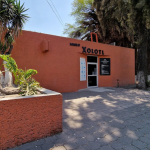
A spectacular little museum dedicated to the ancient Tenayuca ruins.
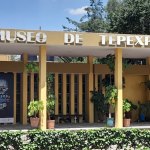
A remarkable mini-museum just off the Pyramids Highway . . .
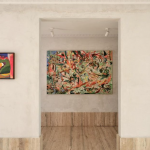
A newly created space for an outstanding collection of postwar abstract works by women artists . . .

Este pequeño lugar alberga 22 figuras de cera de personajes históricos y del ámbito artístico
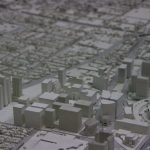
Una increíble representación en 3D de una de las mayores ciudades del hemisferio.